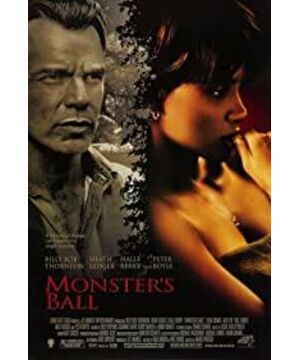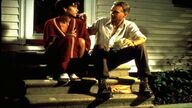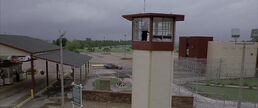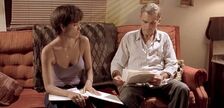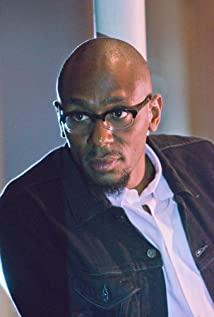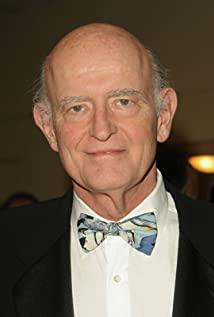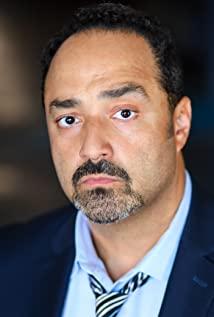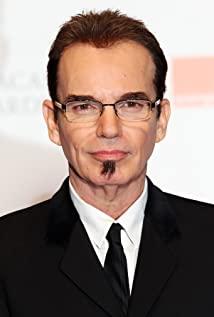The opening was originally a family drama, but the director changed it. What we saw was a rather psychedelic picture. Half of the picture was of Hank, played by Billy Bob Thornton, lying on the sofa, and the other half of the picture was of various pre-flashes or pre-flashes. Back to the changes in the scene, some are driving a car, some are three tombstones in his homeland, and some are birds raised by Lassia, played by Halle Berry. Hank and Lysia will meet soon.
In the original script, Hank lived with a roommate, but later changed to live with his father. The purpose of this change is to make the whole story more personal, and the narrative conflicts are also more internalized. And Hank and son Sonny share the setting of a prostitute, which actually deepens the conflict of internalization. In the film, the telescopic mirrors that appear in the hotel room, the Lassia bathroom and other scenes, are not in the script, and they belong to the director Fostergar. Foster designed a corresponding mirror composition around the telescopic mirror.
Sonny, played by Heath Ledger, committed suicide in the film about half an hour. Later, when Lysia saw Sonny's picture, he told Hank that he was not like you. Hank replied that he was more like his mother. To a certain extent, it explains Sonny's suicide. There is no place for his mother in this house, and no place for him. Heath Ledger finally said, "I have always loved you." The director originally wanted to delete this line, but finally decided to keep it because of the great power. In addition, the photo of Sonny when he was a child that appeared at the end of the credits is also a photo of Heath Ledger himself when he was a child.
With Sonny's suicide, part of Hank's body also died. He began to change. The director designed a transition scene where Hank drove on a ferry and then went to another prison across the river. The sky was raining, and the ferry slowly passed by. On the ferry was Hank's car. Hank was sitting in the car and eating chocolate ice cream. Heralds Hank's life journey. This entire paragraph is not in the script.
Among them, including rain, prisoners and prison guards on the way after the camera, and prison guards suddenly galloping horses, these are not designed, they are just caught.
Hank and Lysia’s passion play is the most important play in "Dance of the Death Row", and the entire second half of the movie is based on this play. Because of this scene, "Death Prisoner's Dance" was initially rated as NC17, but after the director re-edited it, it was downgraded to R level. In this scene, we will see bird cages and birds inserted from time to time in the middle. This is a bird raised by Lysia. We can also see a picture of a bird hanging on the wall in Lassia’s house. Bird cages and birds are not in the script. Foster used bird cages and bird metaphors to refer to the situation of Hank and Lysia. After Lassia was driven out of the house because she couldn't pay her mortgage, we could see that the bird cage had been opened and the bird had flown away. One detail of this scene is that Hank and Lassia initially used the same position as the prostitute when they had sex with each other. The initial design was that Hank wanted to do this, but Lysia was unwilling to obey. In the movie, this posture didn't last too long, and soon Lysia sat on Hank. Finally, the two gradually became gentle. For the two characters, this is the moment of their awakening from their previous lives.
I thought of "Lust Caution" while watching this scene. Ang Lee also interrupted Tony Leung and Tang Wei with dog pictures in "Lust Caution". I also think that Halle Berry and Billy Bob Thornton really did it in this scene.
In the original script, Hank went out to buy ice cream at the end. Lysia saw the portrait of Sonny and Hank drawn by Lawrence while looking through Sonny's room. When Hank returned home, Lysia shot and wounded him, and the blood and the melted ice cream slowly poured down. Lasiaa seized the door and walked away. Hank would call the police that he accidentally wounded himself by shooting. The design here is very much like Hank deliberately let Lysia discover these paintings, so as to punish and kill himself.
In the film, Lysia found the painting, but did not do anything to harm Hank. However, when Lysia followed Hank out and sat on the steps to eat ice cream, you could see her holding a picture in her hand. The director said that it is also possible that Lysia was hiding a gun in the painting. In the end, Lysia didn't do anything to Hank. Lysia's tear-stained eyes went from shock, perplexity to relief, and finally she ate the ice cream that Hank fed, with a little happy expression on her face.
My own understanding is that the turning point for Lycia forgiving or accepting Hank was when she saw Sonny’s tombstone from a distance. Then Sonny said while digging out the ice cream, "I passed our gas station, and I like that sign." He said "our" instead of "mine."
View more about Monster's Ball reviews


